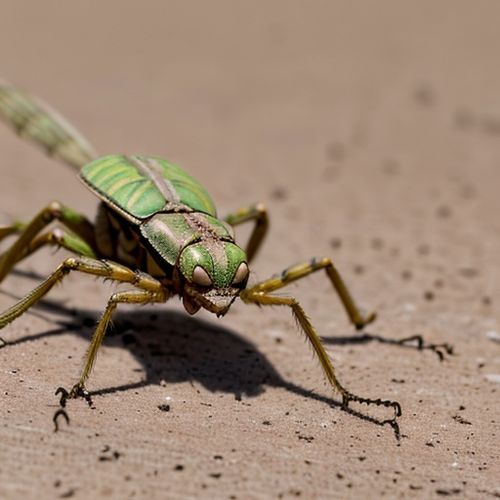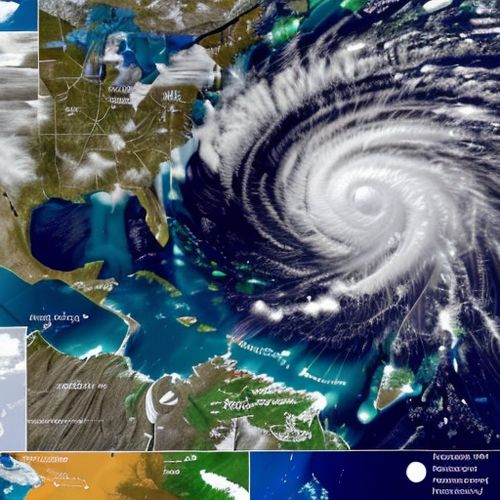The recent resurgence of desert locust swarms across East Africa has once again brought the issue of pest control into sharp focus. These voracious insects, capable of devouring vast swathes of crops in a matter of hours, pose a significant threat to food security in an already vulnerable region. Governments and international organizations are scrambling to implement measures to mitigate the damage, but the scale of the problem requires a coordinated and sustained response.
Historical Context and Current Crisis
Desert locusts have been a perennial challenge in Africa for centuries, with historical records dating back to ancient Egypt. However, the current outbreak is among the worst in decades, exacerbated by unusual weather patterns linked to climate change. Heavy rains and cyclones in the Arabian Peninsula created ideal breeding conditions, allowing locust populations to explode before spreading to the Horn of Africa. Countries like Kenya, Ethiopia, and Somalia have borne the brunt of the devastation, with millions of hectares of farmland destroyed.
The economic impact is staggering. A single square kilometer of locust swarm can consume as much food as 35,000 people in one day. For subsistence farmers, this means total crop loss and the specter of famine. The United Nations Food and Agriculture Organization (FAO) estimates that over 20 million people in the region are already facing acute food insecurity due to the locust infestations.
Traditional and Modern Control Methods
For generations, African farmers have relied on traditional methods to deter locusts, including smoke, noise, and physical barriers. While these approaches may offer limited protection for small plots, they are woefully inadequate against the massive swarms seen today. Modern control efforts primarily involve the aerial spraying of chemical pesticides, which can be effective but come with significant drawbacks.
The most commonly used pesticides are organophosphates, which are toxic not only to locusts but also to other insects, birds, and even humans if improperly applied. Environmental concerns have led to calls for more sustainable alternatives, such as biopesticides derived from natural fungi. These options are safer but often less immediately effective and more expensive, putting them out of reach for many affected countries.
Logistical and Political Challenges
Even with effective pesticides available, delivering them to affected areas presents enormous logistical hurdles. Many locust breeding grounds are in remote, insecure regions where infrastructure is poor or nonexistent. In Somalia, for instance, the presence of armed groups makes some areas virtually inaccessible to pest control teams. This allows locust populations to grow unchecked before spreading across borders.
International cooperation is essential but often fraught with difficulties. Early warning systems exist to monitor locust movements, but information sharing between countries is sometimes delayed due to political tensions or bureaucratic inefficiencies. By the time control measures are approved and implemented, swarms may have already moved on to new areas, perpetuating the cycle of infestation.
Innovative Approaches and Future Outlook
Researchers are exploring several promising avenues for more sustainable locust control. One approach involves using satellite imagery and machine learning to predict breeding areas with greater accuracy, allowing for targeted early intervention. Another focuses on disrupting locust swarming behavior through pheromone manipulation, potentially preventing the formation of destructive mega-swarms.
Some scientists are investigating genetic approaches that could reduce locust fertility or make them less likely to swarm. While these methods show potential, they remain years away from field deployment and raise ethical questions about ecosystem manipulation. In the meantime, the most practical solution may lie in strengthening regional capacity for surveillance and rapid response.
The current crisis underscores the need for long-term investment in locust research and control infrastructure. Climate models suggest that favorable conditions for locust outbreaks will become more frequent, making preparedness all the more critical. Without sustained international support, vulnerable communities will continue to suffer cyclical food shortages whenever locust populations boom.
Humanitarian Implications and Call to Action
Beyond the immediate agricultural damage, locust swarms have cascading effects on local economies and social stability. As crops fail, food prices soar, and pastoralists lose grazing land, conflicts over dwindling resources often intensify. Migration patterns shift as people move in search of food and work, potentially straining relations between communities and neighboring countries.
The international community must view locust control not just as an agricultural issue but as a humanitarian imperative. Increased funding for monitoring and prevention could save billions in emergency aid down the line. Perhaps most importantly, affected countries need support to build resilient food systems that can withstand periodic locust invasions without collapsing into crisis.
While the challenge is immense, history shows that coordinated action can succeed against locust plagues. The key lies in combining modern technology with local knowledge, maintaining vigilance during quiet periods, and fostering cooperation across borders. Only through such comprehensive approaches can Africa hope to break the cycle of devastation wrought by these ancient pests.

By Victoria Gonzalez/Apr 14, 2025

By Samuel Cooper/Apr 14, 2025

By William Miller/Apr 14, 2025

By Emma Thompson/Apr 14, 2025

By Lily Simpson/Apr 14, 2025

By Emily Johnson/Apr 14, 2025

By George Bailey/Apr 14, 2025

By Sarah Davis/Apr 14, 2025

By Grace Cox/Apr 14, 2025

By Natalie Campbell/Apr 14, 2025

By Christopher Harris/Apr 14, 2025

By Rebecca Stewart/Apr 14, 2025

By Joshua Howard/Apr 14, 2025

By Jessica Lee/Apr 14, 2025

By Eric Ward/Apr 14, 2025

By Lily Simpson/Apr 14, 2025

By William Miller/Apr 14, 2025

By Olivia Reed/Apr 14, 2025

By William Miller/Apr 14, 2025